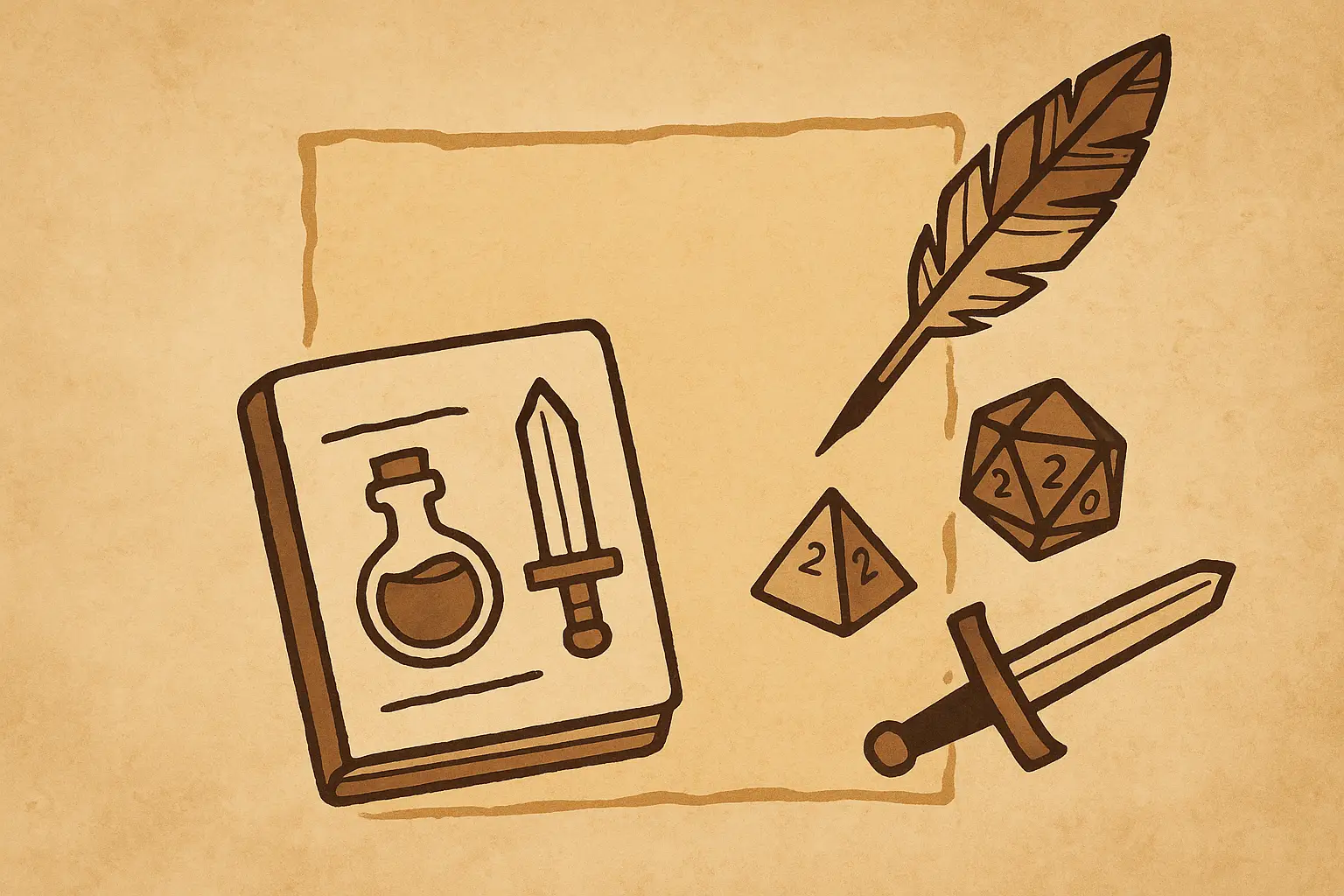A behind-the-screen look at narrative sleight-of-hand and maintaining player agency
“Do you go left… or right?”
The party debates for ten minutes. One wants to check the ruins. Another insists on the bridge. Someone flips a coin.
You, the GM, smile.
It doesn’t matter.
Because both lead to the same ambush. And the players will never know.
Welcome to the delicate art of illusion of choice—the GM technique of guiding the story without sacrificing player agency.
Is it deceptive? A little.
Is it necessary? Sometimes.
Is it powerful? Absolutely.
Today on RPGInquisitor, we explore why illusion of choice exists, when it’s appropriate, and how to use it without players ever feeling like you’ve stolen their story.
🎲 What Is the Illusion of Choice?
It’s a tool.
You present options that seem meaningfully different—but serve the same narrative purpose.
Examples:
- The party chooses one of three doors. Behind each is the same scene, just reskinned.
- They pick which town to visit first. Whichever they choose, the villain has already struck.
- They negotiate with any of five factions. All offer a lead to the same dungeon.
You’re not lying—you’re framing.
And when done right, your players feel in control—even when the structure behind the curtain is firm.
🧠 Why Use It?
1. Pacing
Sometimes, you need the story to keep moving. If every fork requires hours of prep and unique outcomes, your game bogs down or your GM load explodes.
2. Focus
The campaign has themes. You want emotional or narrative momentum. You don’t need three irrelevant side branches breaking tone.
3. Prep Efficiency
You’re a mortal. You can’t write 60 pages of branching options every week. Illusion of choice lets you reuse, reskin, and redirect.
4. Player Experience
Ironically, some choices feel more satisfying when players have clarity and momentum. Too many options can paralyze or distract.
🧩 The Golden Rule: Guide, Don’t Remove
The illusion of choice should support agency, not erase it.
Bad use:
- “Whichever door you choose, you’re captured anyway.” (Railroading)
- “You say no, but the king teleports you there.” (Agency theft)
Good use:
- “You choose how you get there, what gear you bring, and who helps you.” (Meaningful prep for a key event)
- “Both roads lead to the ruins—but how you arrive, and what happens on the way, is different.” (Narrative tone shift)
Think of it like stage lighting. You control the focus—but the actors still perform.
⚙️ Techniques for Crafting the Illusion
🛤 1. Converging Paths
Offer choices that lead to the same destination—but feel different.
Example:
- Left path = steep cliffs and ghost rumors
- Right path = dark forest with bandits
Both lead to the dungeon. But how they get there feels like a story.
🎭 2. Reskin Encounters
Prep one encounter. Dress it in different clothes depending on where they go.
- In the swamp? The villain’s minions are will-o’-the-wisps.
- In the desert? Sand specters.
- In the mountain? Echoing illusions.
Players get variety. You don’t prep three full stat blocks.
🧱 3. Modular Events
Build scenes like LEGO. Independent pieces you can snap into place when needed.
- Traveling merchant
- Clue to the larger mystery
- Dramatic moral choice
Trigger them whenever the story needs a push—no matter the path chosen.
🗺 4. Delayed Consequences
Let the players make real choices now—consequences hit later.
- They spare the bandit? He shows up with information in a future town.
- They ignore the storm warning? Later, they’re caught unprepared.
The choice was real. It just didn’t feel like a branch at the time.
👥 How to Maintain the Feeling of Agency
Players don’t need perfect freedom.
They need:
- Meaningful control
- Consequences they can trace
- Emotional buy-in
You can accomplish this by:
- Letting them choose how to approach a goal even if the goal is fixed
- Letting their morals and methods shape outcomes
- Giving them ownership of details (“What’s your hometown like?” “Who did you trust in the war?”)
The railroad is fine—if the players built the train and chose the route.
🧙 Examples in Play
Example 1: The Two Towns
You offer:
- Frosthelm (remote, haunted, political tension)
- Embergrave (wealthy, dragon threat, noble intrigue)
Whichever they choose, the villain’s ritual is nearly complete. You run a different side story—but the finale is shared.
They feel ownership of tone and path. You retain campaign momentum.
Example 2: The Mysterious Letter
Who delivers it? You had three NPCs in mind. You wait for the players to engage with one naturally—and that’s who gives it to them.
The illusion? That you planned it all along.
The reality? You watched and reacted with intent.
🧩 When NOT to Use Illusion of Choice
❌ 1. When Players Expect Consequences
If a choice was framed as the moment—let it matter.
- Don’t say “The town is safe or destroyed” and then script it to fall either way.
- Don’t give them a moral dilemma, then ignore the outcome.
If you fake meaningful choices, players eventually stop investing.
❌ 2. When Players Created the Fork
If your players build a strategy, recruit allies, or plan a diversion—let it affect the world.
Undermining effort = killing trust.
🔍 Common Myths (and Truths)
“Illusion of choice is railroading.”
✅ Only if used to negate player decisions. Otherwise, it’s controlled storytelling.
“Players don’t notice.”
✅ True… until it’s obvious. Use subtly, with variation and reflection.
“It’s lazy.”
✅ It’s efficient, intentional, and GM-saving. Good illusion takes craft.
🧠 Final Thoughts: Story First, Ego Second
As a GM, it’s tempting to build vast sandboxes, endless branches, and 37 possible villain lairs.
But great games aren’t built on infinite content. They’re built on emotionally satisfying illusion, handled with trust.
Let players:
- Feel freedom
- See impact
- Own their story
And if you happen to reuse the same dungeon layout three times?
That’s not cheating.
That’s magic.



